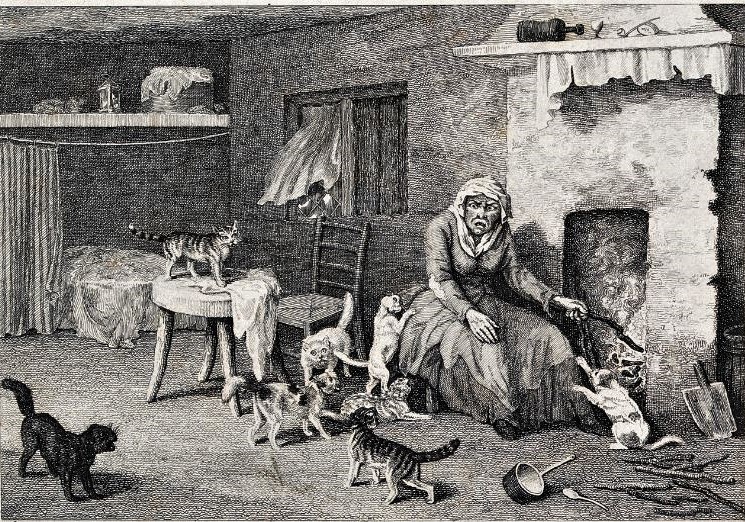
“Go up Tenth Avenue and in various cross streets running down to the river are some of the worst blocks in the city; and there are blocks corresponding with them along the East River. The names of some of these places are significant: ‘Battle Row,’ and ‘Hell’s Kitchen,’ and ‘Sebastopol.'” — James W. Shepp and Daniel B. Shepp, Shepp’s New York City Illustrated: Scene and Story in the Metropolis of the Western World (1894).
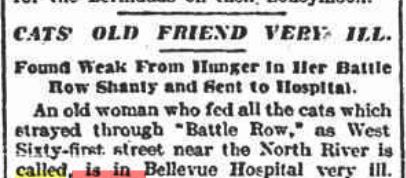
Like many of the homeless “crazy cat ladies” throughout New York City’s history, Helen Sawtelle had once had a home. Until she lost it for some reason.
Perhaps the reason she ended up on the streets of Manhattan without a place to call home was loss itself. Maybe she lost her job or all her savings, or maybe she lost a spouse or other loved one who had supported her. Maybe she had lost some of her mental faculties. We’ll never know for sure.
What we do know—based on a small article in The New York Sun on January 17, 1902—is that Helen was “an old woman” who had once lived on a small farm in New Jersey. She still had a sister who lived in that state, and she still derived “a pittance” from the family farm.
Sometime during her lifetime, Helen had moved to a neighborhood of old tenement houses near West 61st Street between 10th Avenue (Amsterdam Avenue) and 11th Avenue (West End Avenue) called “Battle Row.” She lived in a tenement for a few years, until she was evicted for non-payment of rent in August 1901.
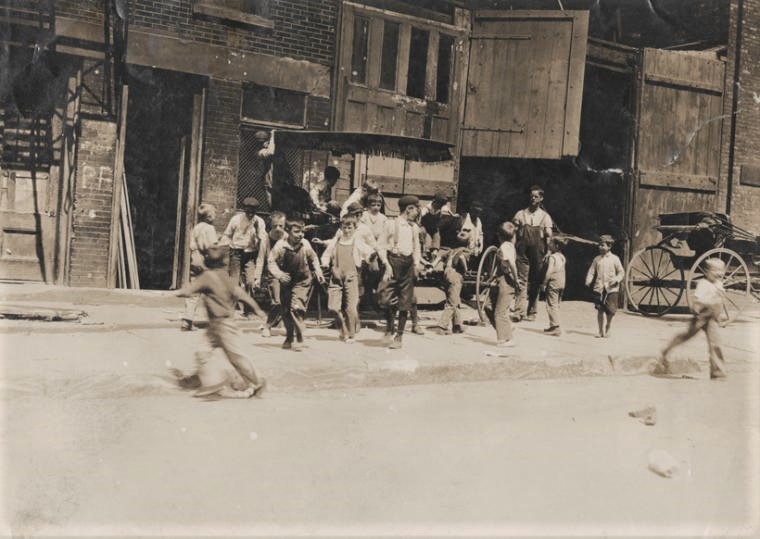
To say that Helen lived in a rough neighborhood would be an understatement. Battle Row and also Cuckoo Row, which were part of the larger San Juan Hill neighborhood of tenements, comprised a few blocks of decrepit, old brick tenements that provided the foulest of living conditions. (In 1904, for example, 100 people lived in what was supposed to be a five-story, four-family tenement at 232 West 61st Street.)
Like Hell’s Kitchen and similar slums, Battle Row had an evil reputation and was a source of great trouble to the police. Street gangs and young urchins terrorized the neighborhood, and there were numerous fights, assaults, arson fires, and arrests. Living conditions were horrendous, as Jacob A. Riis documented in his photographs of that time.
A Shanty for Helen on Battle Row
Luckily for Helen, though, she had some friends in Battle Row. They were able to secure “squatter sovereignty” in a tiny frame building “hardly bigger than a good-sized dog kennel” in the yard of a small frame building at 234 West 61st Street between Amsterdam (10th) and West End (11th) Avenues. This little shanty was surrounded by five-story brick tenement buildings, the Union Stock Yards, gas holding tanks, Eastman’s slaughterhouse, a brewery, and other dirty and noisy businesses.

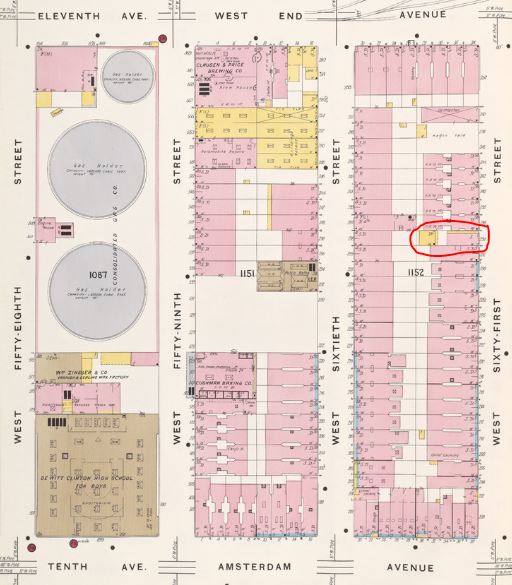
For five months, Helen lived in this tiny shack and tried to earn a living as a dress maker. Although she had very little money, she took in every cat that strayed near. Using her “scanty earnings,” she would provide food and care for the cats until someone who wanted a pet cat came to her, or “the [Henry] Bergh society man came along.”
When winter arrived, several street urchins from the Battle Row neighborhood patched up Helen’s shanty roof with tar paper and old boards. Someone even gave her an old oil stove. Helen tried to survive with her cats inside the rickety wood structure.
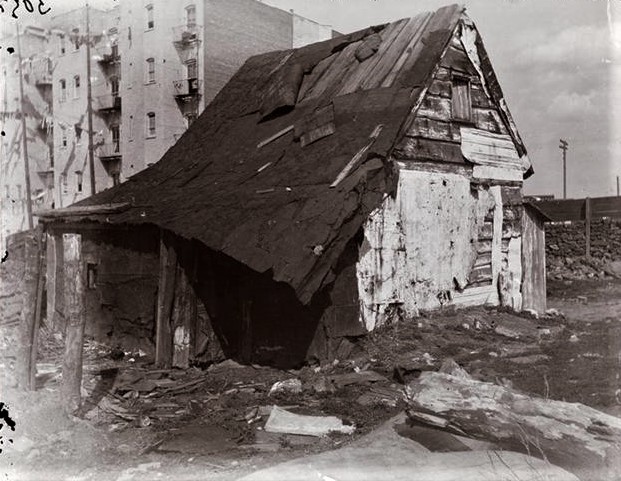
Shortly after New Year’s Day, 1902, residents of the neighborhood became concerned when Helen did not come out of her shelter. Policemen Donahue and Douglass of the West 68th Street station house broke in the door and found her so weak from hunger she could hardly walk.
Helen was taken to Bellevue Hospital. Sadly, I do not know what became of Helen, but as The Sun reporter noted, “The stray cats of Battle Row are probably wishing her a speedy recovery.”
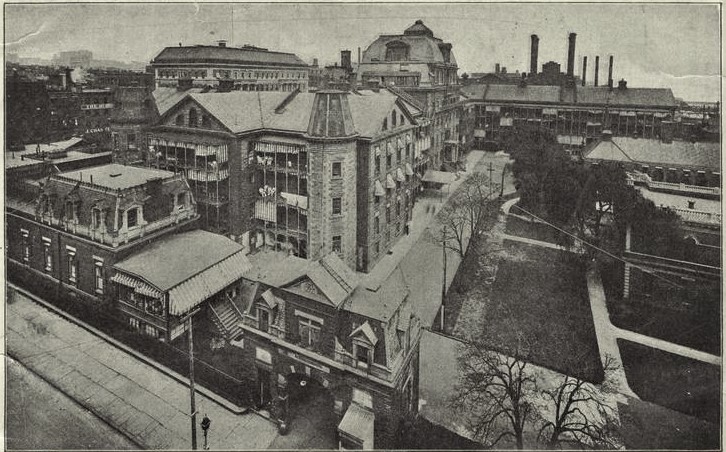
The John Somarindyck and John Low Farm
The Battle Row neighborhood occupied the site of a former 10-acre farm and picnic grounds owned by John and Adelaide Low in the early 1800s. This land was once part of a much larger, 318-acre farm owned by Johannes and Catharine Van Brugh, who had received a patent from Dutch Colonial Governor Richard Nicolls on October 3, 1667 (this is the first record of ownership).
Over the years, the land passed through many owners, including Tunis-Cornelissen and Anneke Stille, Stephen DeLancy (a British Loyalist who called the farm Little Bloomingdale), and then John Somarindyck, who purchased the land from Isaac Stoutenburgh and Philip Van Courtlandt, Commissioners of Forfeiture, for $2,500 in 1785.
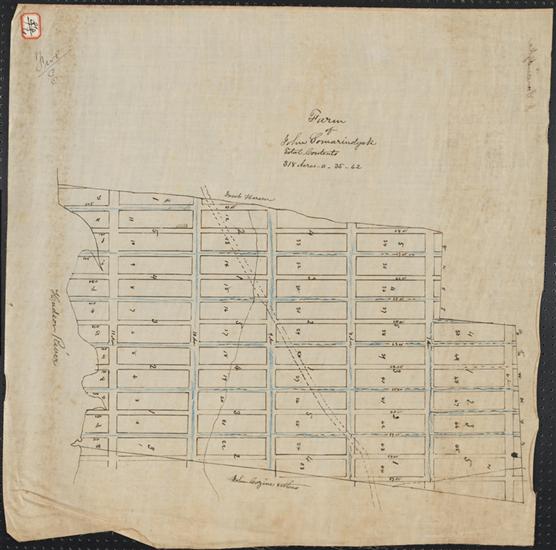
John Somarindyck erected a house on Tenth Avenue between 61st and 62nd Street (probably just a few feet from where Helen’s shanty was built). A winding road lead from the house in a southwesterly direction until it met the Bloomingdale Road (Broadway) at present-day 60th Street. In later years, Stephen DeLancy occupied this house, which was the small hamlet he established (Little Bloomingdale or Bloomingdale Square).
John Low and his wife Adelaide Johanna Low acquired a small portion of the Somarindyck farm around 1824. John, who had begun working as a cashier at the Union Bank at 17 Wall Street in 1811, had become bank president in 1822. He built a two-story stone mansion on his new country seat, which he called Locust Grove.
The mansion was surrounded by a dense forest, which became a popular picnic ground for local residents, even after the property was cut off from the river when the railroad was constructed. Large quantities of wild pigeons lived in the area, and the hunting was reportedly great.
In 1851, the Low house and some of the land was purchased by John Tirburce Gregoire de Milhau, a San Domingo refugee who lived here until 1858. Shortly thereafter, the old Low house became a beer and dance hall.

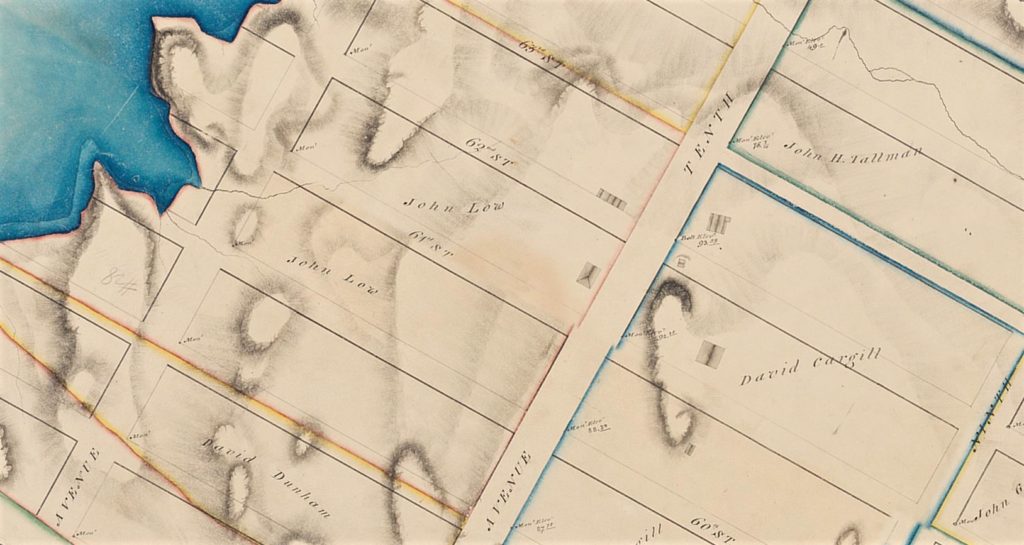
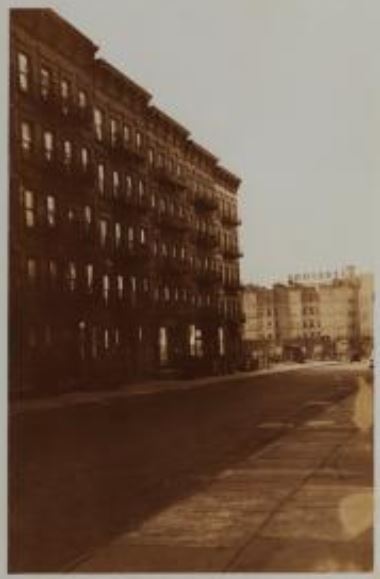
From Battle Row to Lincoln Square
Two years after Helen was taken to Bellevue Hospital, the lot at 234 West 61st Street was sold at a foreclosure auction for $5,000. At that time, there was still only the two-story frame building on the 100 x 25 foot lot.
Sometime between 1904 and 1907, a one-story brick garage fronting the street was added to the lot. Both the frame and the brick building were still standing in 1919, when the property was sold for J. George Flammer to C.W. Bishop.
In later years the brick garage was occupied by an auto repair shop (1926) and the Central Guarantee Sheet Metal Works (1934).
In 1940, the New York City Housing Authority called the area “the worst slum section in the City of New York” and made plans to demolish all the old tenements. The Amsterdam Housing Projects were built in 1948, replacing three blocks that had collectively housed 1,100 residents. During the 1950s and 1960s, thousands of more tenement residents were displaced as part of the Lincoln Square Renewal Project.
In 2007, a 27-story multi-use building was erected at 226-238 West 61st Street. Where Helen Sawtelle once lived in a squalid shanty with her cats is now what is considered to be “the ultimate in Upper West Side luxury living.”
Just 10 minutes from Central Park, Columbus Circle, and Lincoln Center, the glamorous building features a heated pool and fitness center, catering kitchen, landscaped roof deck with private cabanas and barbecue grills, private treatment rooms, a kid’s playroom, game room, media room, and much more.
On the ground floor is a pediatric dentist and the Hudson Animal Hospital where, I’m sure, the cats get the best of care.




